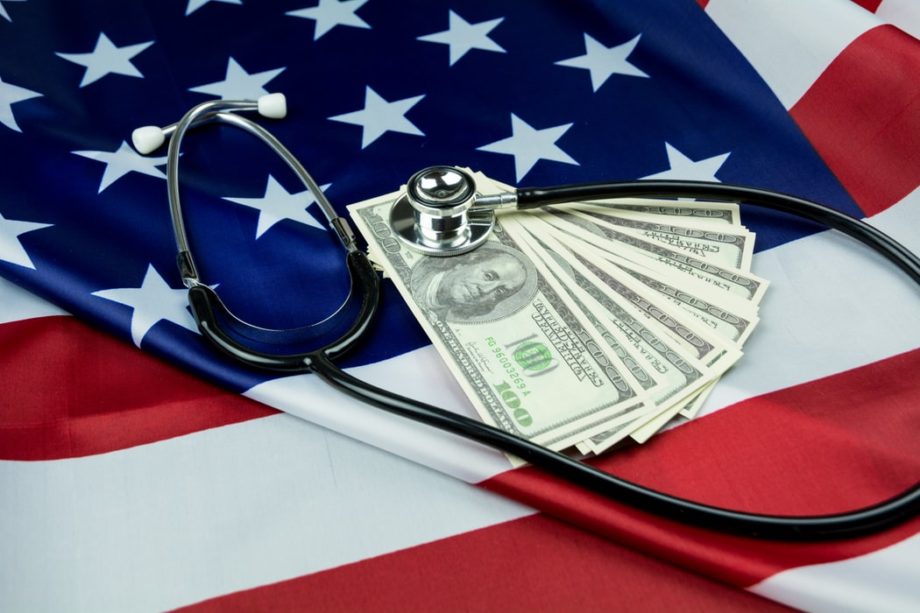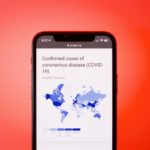
With the for-profit private health insurance system, healthcare in the US can be extremely expensive.
Whether it is medical care, doctor’s appointments, or prescription medications, it typically costs an American a worrying amount of money.
Even with an insurance plan, many Americans struggle to afford healthcare.
Those without insurance plans face an even bigger problem. Most of the time, it is one of two choices.
Either:
(1) spend a large amount of money and possibly end up in debt to receive the care that they need.
Or
(2) avoid receiving the care they need and save money.
This tricky and expensive system has a number of effects on the American general public, and their health.
Some of these effects include:
- People do not seek medical care immediately
- People develop chronic illnesses
- High hospital and ambulance costs
People do not seek medical care immediately

One effect of the expensive healthcare system in the US is that many individuals do not seek medical care immediately.
If they have a minor medical problem, they will most likely push it off to avoid paying any expenses.
If it becomes more of a problem, for example they can no longer go to work because of this problem, they may seek help.
The kind of help they may seek may be at a walk-in clinic.
Walk-in clinics are for individuals without health insurance, and are typically affordable.
The kind of care that an individual will receive at a walk-in clinic is typically only temporary, and is more of a quick-fix than a real solution.
Along with this, individuals without insurance most likely do not have a primary care physician (PCP). This means that they do not have yearly check-ups, and they do not have a medical professional checking on their general health.
With no main healthcare source to rely on, it is difficult to get medical help. Without regular check-ups and exams, many medical problems go unnoticed.
Medical issues going unnoticed and untreated can lead to even more problems.
Developing chronic illnesses

Another effect of the expensive healthcare system, along with other socioeconomic and environmental factors, is the development of chronic illnesses.
When individuals without insurance do not have a healthcare professional checking their general health, what may be a small issue to begin with can develop into a chronic illness.
A lot of Americans are unaware of the medical issues they may be experiencing. They also may be unaware of the preventable and chronic illnesses that can develop from these issues.
Chronic illnesses and medical issues such as high blood pressure, high cholesterol, diabetes, heart disease, and obesity affect many Americans.
These issues are often left unnoticed, untreated, and unmonitored.
Individuals’ health worsens due to these chronic illnesses, and suddenly their medical expenses may rapidly increase due to the care that they require.
These chronic illnesses often also result in death. Many Americans are losing their lives to preventable diseases due to the tricky healthcare system, among other issues.
High hospital and ambulance costs

When an American does need immediate medical attention, a trip to the hospital can be extremely costly.
There are very many different fees a hospital can charge you for. These fees differ from hospital to hospital, but either way it’s normally quite expensive.
Typically, a hospital has a “facility fee”.
What is a facility fee?
This is the fee that hospitals charge for keeping their facility up and running, keeping their doors open, lights on, and emergency room operating all hours of the day.
These fees can vary from hospital to hospital. Some facility fees are a few hundreds of dollars, some are in the thousands.
The facility fee can be attributed to the bill for a family that was charged $629 for getting a Band-Aid placed on their daughter’s finger.
The Band-Aid cost $7, so the remaining $622 was the hospital’s facility fee for simply walking through the door and seeking medical help.
The facility fee is a shared cost that keeps the emergency room running.
Even with health insurance, individuals can end up with extremely expensive bills.
How does health insurance affect your hospital bill?
Your type of health insurance may influence which hospital you go to, if you are able to decide which hospital to go to.
Just as there is private and public health insurance, there are also private and public hospitals.
If you have private health insurance, you may need to contact your insurance provider and check which hospitals you can seek care from.
Some individuals end up in tricky situations if there are not enough hospital options.
Depending on your medical issue or injury, you may only be able to go to one hospital in your area.
Let’s look at an example.
You just fell from a high height, and need to receive an examination and care.
Your insurance is private.
After contacting your insurance provider, they suggest you go to the ER.
You ask which hospitals are covered under your insurance, and they give you recommendations.
Once you get to the recommended hospital, you find out you need to go to a trauma center.
The only hospital with a trauma center is the public hospital, which is not covered by your insurance.
You are transported to that hospital via ambulance, and receive the care you need.
Then the hospital and ambulance send you extremely expensive bills that are not covered by your private health insurance. This means you are responsible for paying them in full. Uh-oh.
However, it is not just the ER visit that may cost you a lot of money.
Being transported to the hospital by ambulance can be extremely expensive as well.

On top of having to pay the hospital for their services, some individuals also need to pay the ambulance as well.
It doesn’t matter if the ambulance is for-profit, non-profit, or publicly owned. They are all going to send you a bill.
One reason why ambulance bills are so expensive is because the ambulance company does not collect all of its billings.
Let’s look at an example.
An ambulance company sent out 5 bills to 5 different people for $1,500 each.
2 of the bills might be paid in full.
Another bill might be paid by the government insurance policy Medicaid for $105.
Another bill might be paid by the other government insurance policy Medicare at $450.
The last person may not pay anything at all, since they don’t have insurance, or there was no address to send the bill to.
In total, that is $3,555 paid, with a total of $7,500 in bills. There is still $3,945 unpaid.
This means the ambulance company collects a lot less money than it charges.
Ambulance companies overcharge in the hopes of collecting more money.
How can you avoid these costs?
To avoid this problem, many Americans have resorted to using Uber and taxi services to be transported to the hospital.
If you think you need to go to the hospital, but aren’t having a major medical emergency that needs immediate attention, it’s best to avoid calling an ambulance. Ask a friend or taxi to drive you there instead.
There are many different effects of the expensive healthcare system in the US, and these are just a few of them.
People not seeking care immediately, developing chronic illnesses that could have been preventable, and avoiding the hospital due to high hospital and ambulance costs.
There are many more effects and other factors that influence the American general public’s health within the healthcare system.







